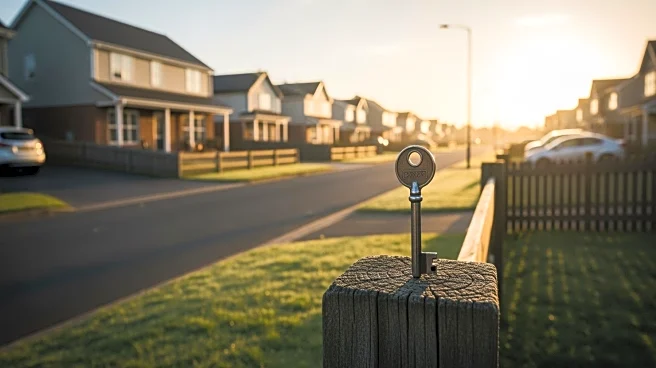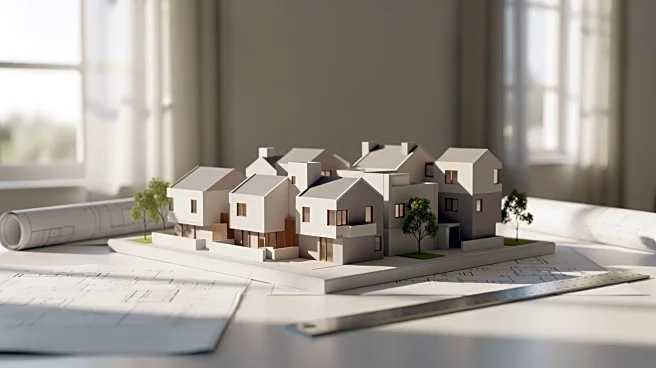What's Happening?
The national median sales price for homes in the United States reached $415,200 in September 2025, marking the 27th consecutive month of annual price increases. This trend has made homeownership increasingly
unaffordable for many Americans, as both mortgage rates and home prices have seen dramatic increases post-pandemic. In response to this affordability crisis, Realtor.com has identified 10 metropolitan areas where the average home price remains under $300,000. Muncie, Indiana, offers the lowest average home price at $178,250, providing a more accessible option for potential homebuyers. Other cities on the list include Toledo, Ohio; Battle Creek, Michigan; and Scranton, Pennsylvania, among others. These areas are noted for having home prices more closely aligned with local incomes, allowing typical households to afford homes without exceeding their financial means.
Why It's Important?
The identification of cities with affordable housing options is significant as it provides potential homebuyers with alternatives amidst a national trend of rising home prices. This development is crucial for individuals and families seeking to enter the housing market without facing financial strain. The affordability in these cities could attract new residents, potentially boosting local economies and increasing demand for services and infrastructure. Additionally, the existence of these affordable areas offers hope to buyers committed to purchasing homes in regions where prices are more manageable, thus contributing to a more balanced housing market across the country.
What's Next?
As home prices continue to rise nationally, the demand for affordable housing options in these identified cities may increase. This could lead to a surge in local real estate activity, prompting further development and investment in these areas. Stakeholders such as local governments and real estate developers may need to address infrastructure and service needs to accommodate potential population growth. Additionally, policymakers might consider measures to ensure that housing remains affordable in these regions, preventing future price spikes that could negate the current affordability advantage.
Beyond the Headlines
The trend of identifying affordable housing markets highlights broader economic and social implications. It underscores the need for sustainable urban planning and development that prioritizes affordability and accessibility. This focus on affordable housing could influence cultural shifts, encouraging migration to smaller cities and towns, thereby diversifying population distribution and reducing pressure on larger metropolitan areas. Furthermore, it raises ethical considerations regarding equitable access to housing and the role of government and private sectors in ensuring that all citizens have the opportunity to own homes.












